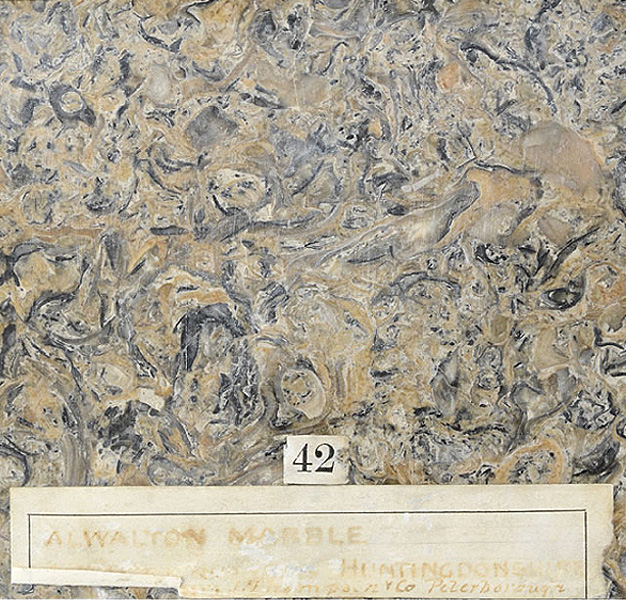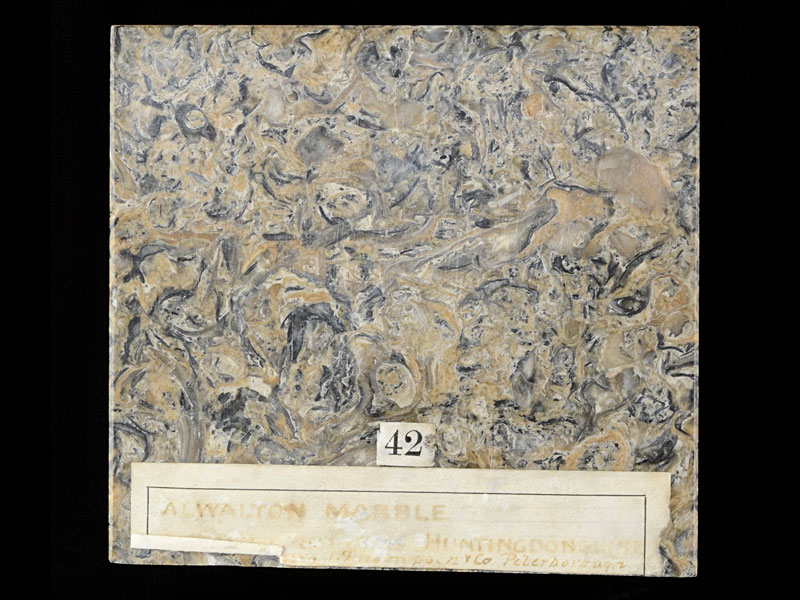
Fact sheet
This shelly limestone comes from Alwalton Quarries near Peterborough, England. This limestone was formerly quarried along the bank of the River Nene at Alwalton in the 12th -13th centuries as a building stone. Quarrying continued as late as the 1920's.
The Alwalton Marble is part of a Middle Jurassic age brownish-grey marine limestone and made up of poorly sorted fossilised oyster shells. It was used in the cathedrals at Lincoln, Peterborough, Bury St Edmunds and Ely, and in Southwell Minster, as well as many parish churches
The thin section illustrates the coarse oyster-like shell fragments, with a sparry calcite cement.
Watson 1911 Building Stones; MO 1316
The United Kingdom Virtual Microscope (UKVM) collection consists of igneous, sedimentary and metamorphic rocks from around the UK.
It is intended as a teaching resource, helping to tell the story of the common rock types and how they form, and reflecting the history of the UK at the margins of the continent of Europe. The collection is a series of teaching sets, for example igneous rocks from the North Atlantic Igneous Province and SW England; high-temperature metamorphic rocks from Scotland and low-temperature metamorphic rocks from Wales; and sedimentary rocks, including English limestones and sandstones.








